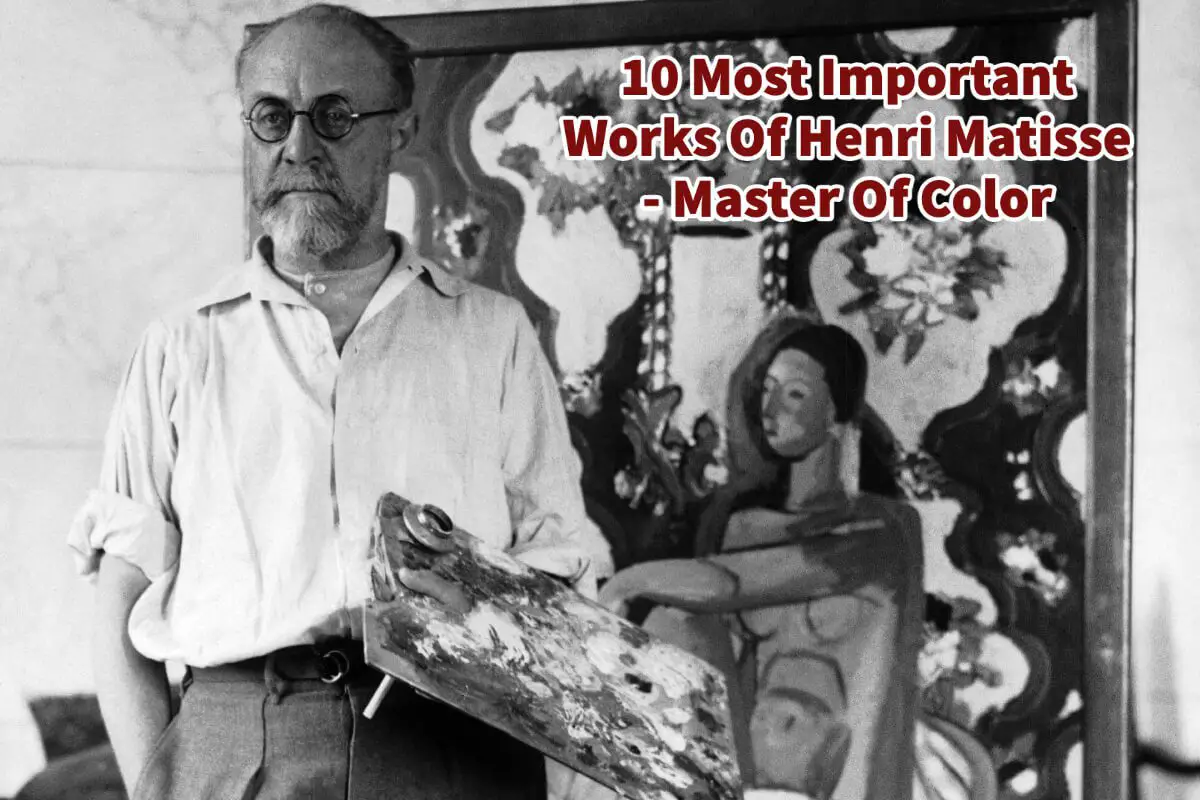Henri Matisse, a pioneering figure in modern art, is a luminary whose works continue to captivate and inspire audiences worldwide. Born on December 31, 1869, in Le Cateau-Cambrésis, France, Matisse’s artistic journey traversed various styles and movements, making him a remarkable innovator in the 20th-century art scene.
Matisse’s prolific contributions to the art world transcended boundaries throughout his prolific career, as he fearlessly explored the interplay of color, form, and emotion. His revolutionary approach to painting and his later experiments with paper cutouts revolutionized the concept of visual expression, solidifying his position as one of the most influential artists ever.
Table of Contents
- Henri Matisse: Master Of Color And Form – A Journey Through His 10 Most Important Works Of Art
- Woman With A Hat (La Femme au Chapeau) – 1905
- The Green Stripe (La Raie Verte) – 1905
- The Joy Of Life (Le Bonheur de Vivre) – 1905-1906
- Dance – 1909-1910
- The Open Window (La Fenêtre Ouverte) – 1905
- The Red Room (Harmony In Red) – 1908-1909
- Lux, Calme et Volupté – 1904-1905
- Music – 1910
- The Snail (L’Escargot) – 1953
- Woman In A Purple Coat – 1937
- Related Questions
In this exploration, we will delve into the significance of ten of Matisse’s most important works of art, each representing a pivotal moment in his artistic evolution and highlighting the enduring impact of his contributions to the art world.
Henri Matisse: Master Of Color And Form – A Journey Through His 10 Most Important Works Of Art
Henri Matisse, one of the most influential artists of the 20th century, revolutionized the art world with his bold use of color and innovative approach to form.
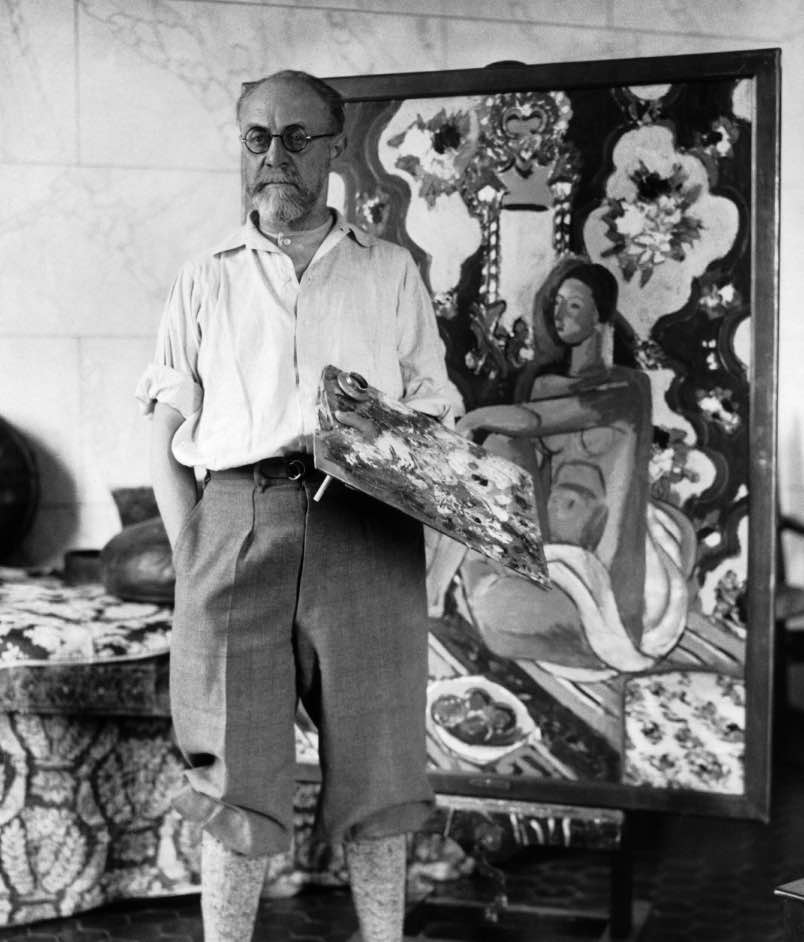
Born on December 31, 1869, in Le Cateau-Cambrésis, France, Matisse’s artistic journey spanned over six decades, leaving an indelible mark on modern art. This blog post will delve into ten of Matisse’s most essential and iconic works, exploring each masterpiece’s significance and impact on the art world.
Woman With A Hat (La Femme au Chapeau) – 1905
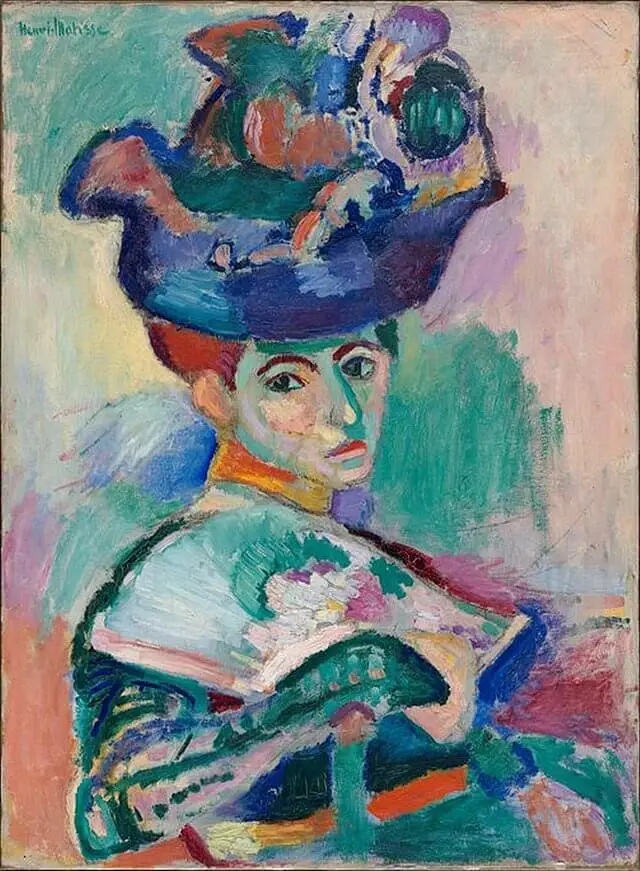
Completed in 1905, “Woman With A Hat” is considered one of Matisse’s breakthrough works and a prime example of Fauvism, an early 20th-century art movement known for its vibrant colors and wild brushstrokes.
The portrait depicts Matisse’s wife, Amélie, wearing an extravagant hat. The bold, non-representational colors and the loose brushwork outraged conservative art critics of the time, leading to the term “Fauves” (French for “wild beasts”) being coined to describe the group of artists led by Matisse.
The Green Stripe (La Raie Verte) – 1905
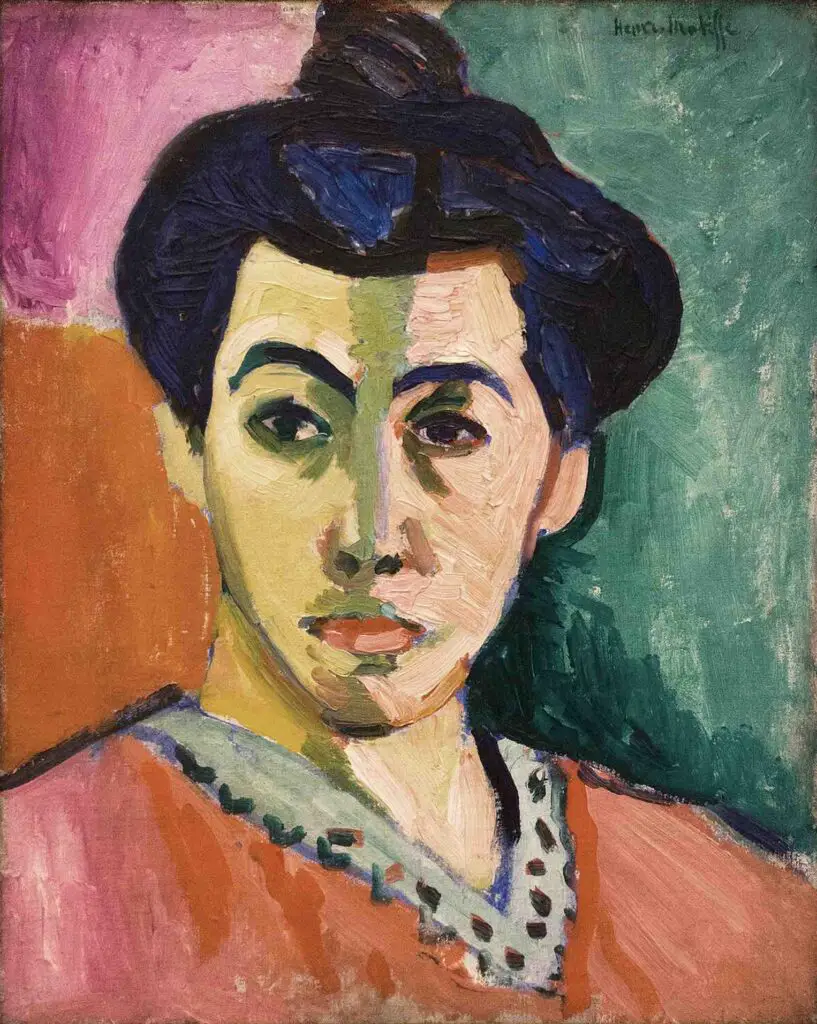
Painted in the same year as “Woman With A Hat,” “The Green Stripe” is another masterpiece that exemplifies Matisse’s Fauvist period.
The painting portrays Matisse’s wife reclining on a couch, with a bold green stripe running down the center of her face, neck, and body. The striking use of color and the innovative representation of the figure as a series of flat planes cemented Matisse’s reputation as a trailblazing artist.
The Joy Of Life (Le Bonheur de Vivre) – 1905-1906

A monumental work in the history of modern art, “The Joy of Life” is a large-scale painting that showcases a romantic scene of nude figures in a harmonious landscape. Completed between 1905 and 1906, this masterpiece marks a transition in Matisse’s style, moving away from Fauvism towards a more mature and contemplative approach.
The painting’s dreamlike quality and sensual celebration of life earned it a place of significance in the canon of modern art.
Dance – 1909-1910
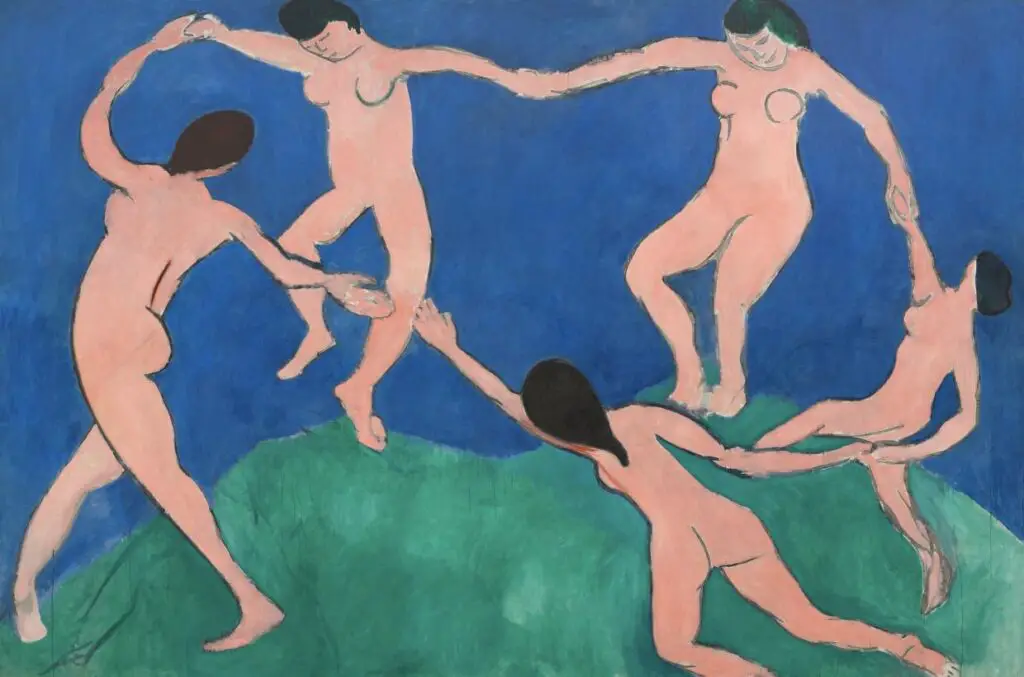
Created as a mural for the Russian businessman Sergei Shchukin, “Dance” is a powerful representation of movement and rhythm. The painting features five nude figures dancing in a circle, their bodies intertwining in a mesmerizing choreography.
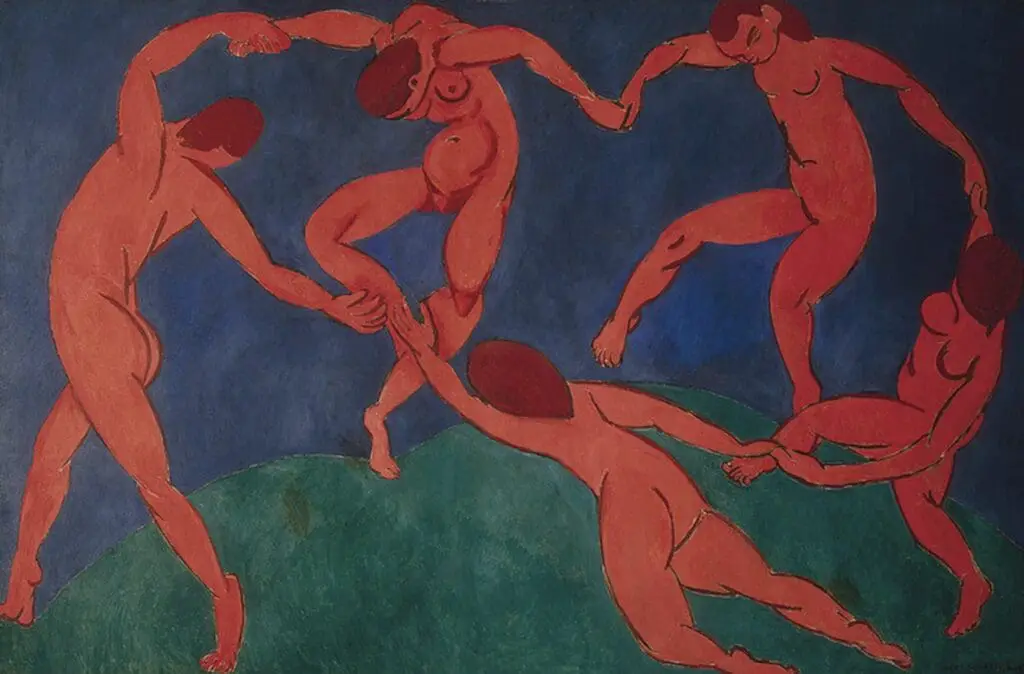
Matisse’s use of simplified forms and rhythmic lines adds to the sense of joyous motion, making “Dance” an enduring emblem of artistic innovation.
The Open Window (La Fenêtre Ouverte) – 1905

“The Open Window” is an exquisite example of Matisse’s experimentation with light and color. Depicting a window opening onto a lush garden, the painting demonstrates his ability to convey an atmosphere and mood by juxtaposing various hues.
The composition’s tranquil ambiance and innovative use of color as a narrative tool elevate “The Open Window” to a vital piece within Matisse’s body of work.
The Red Room (Harmony In Red) – 1908-1909
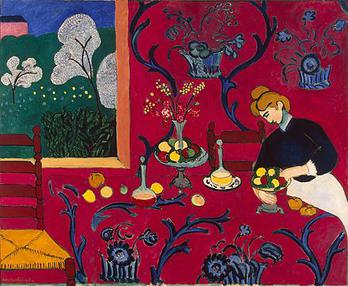
“The Red Room” is a remarkable interior scene that exemplifies Matisse’s distinctive use of color and composition. Dominated by shades of red, the painting depicts a room filled with furniture, flowers, and patterns, creating a sense of visual harmony.
This work is a testament to Matisse’s mastery of transforming everyday scenes into vivid and evocative visual experiences.
Lux, Calme et Volupté – 1904-1905
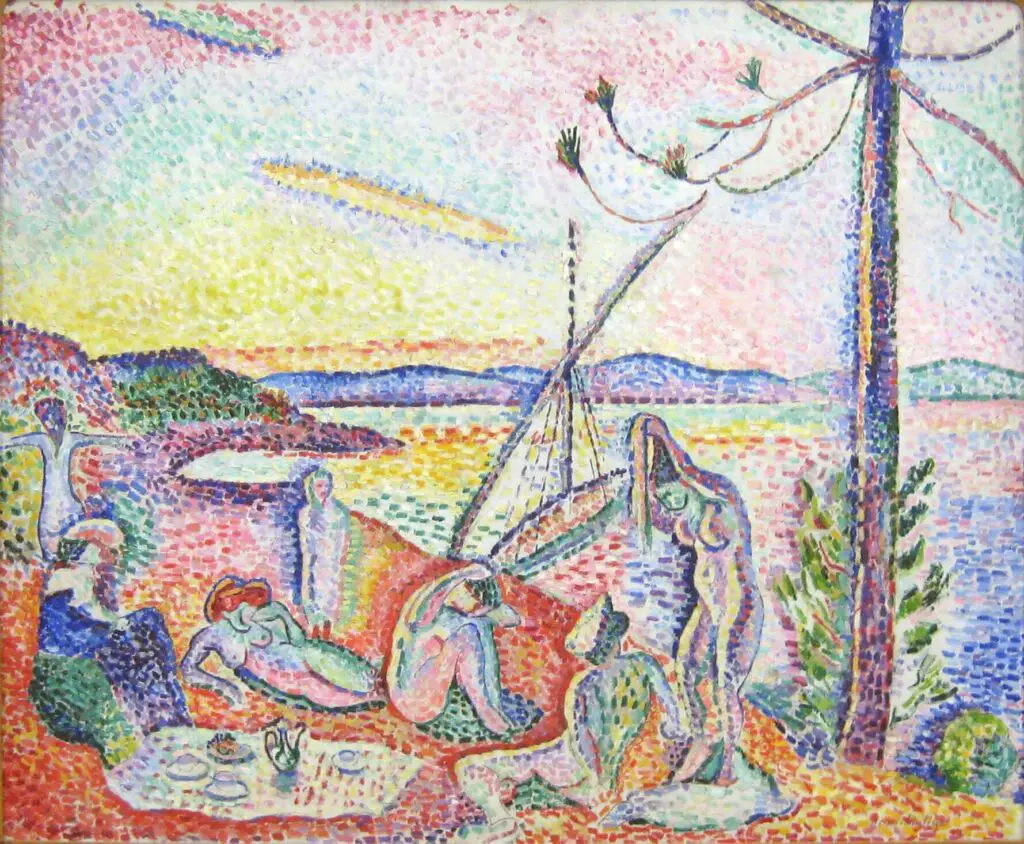
“Lux, Calme et Volupté” is an early masterpiece that embodies the essence of Matisse’s exploration of the human relationship with nature. The painting shows a serene landscape with bathers lounging by the water, surrounded by lush greenery.
It demonstrates Matisse’s transition from the academic style to a more personal expression of color and form, foreshadowing the revolutionary artistic path he would later take.
Music – 1910

“Music” is part of a series of decorative panels commissioned from Matisse by Shchukin. The painting presents three female figures playing various musical instruments.
Matisse’s bold colors and flowing lines impart a sense of rhythm and movement to the composition, making it a striking visual representation of the music theme.
The Snail (L’Escargot) – 1953
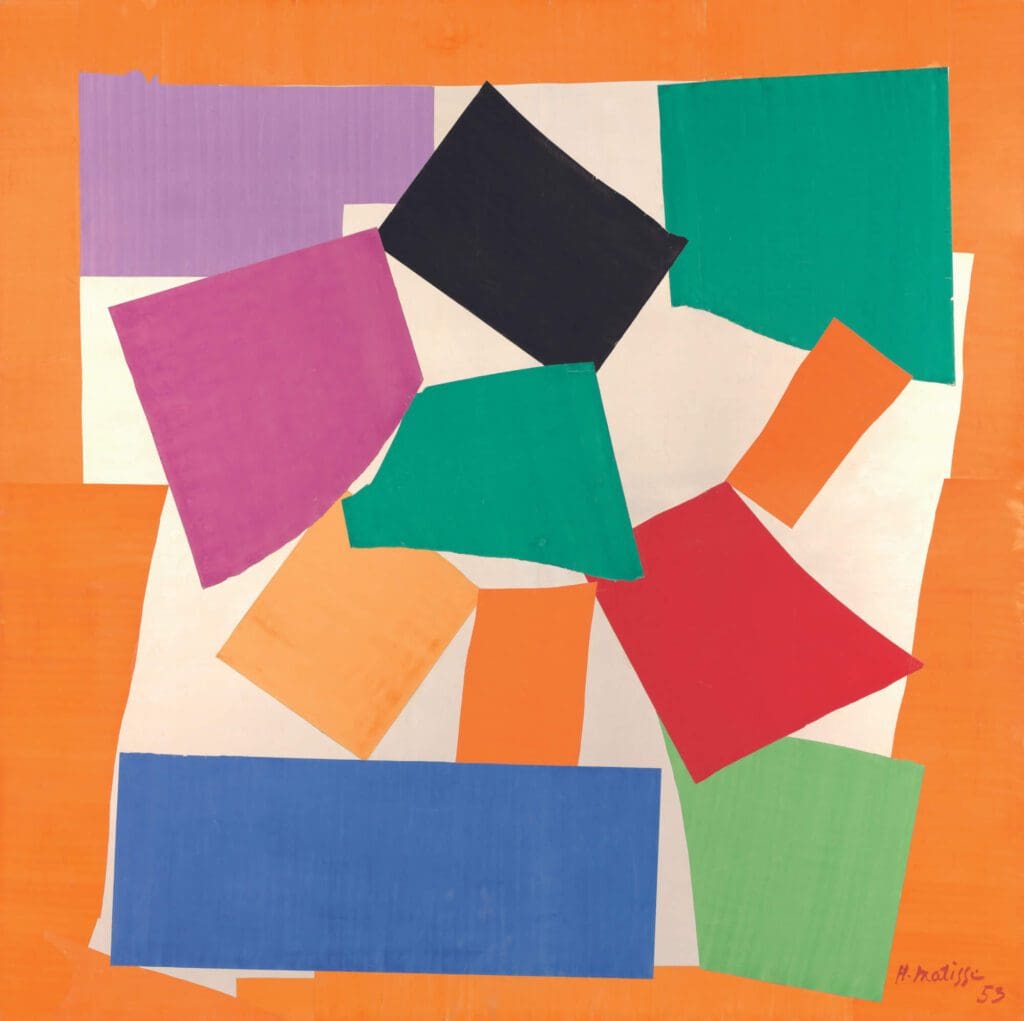
“The Snail” is a late work in Matisse’s career, created during his cut-out period when he could not paint due to health issues. This masterpiece is a collage of vibrant paper cutouts arranged in a circular shape, evoking the spiral motion of a snail’s shell.
Despite its simplicity, “The Snail” represents the culmination of Matisse’s lifelong exploration of color and form.
Woman In A Purple Coat – 1937
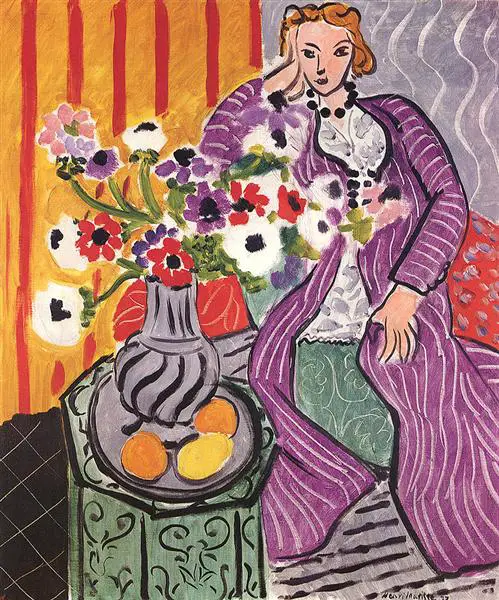
“Woman in a Purple Coat” is an outstanding example of Matisse’s later portraits. The painting features a woman in a fashionable purple coat, rendered in bold brushstrokes and with a sense of spontaneity. The work showcases Matisse’s ability to capture the essence of his subjects while maintaining a masterful balance between abstraction and representation.
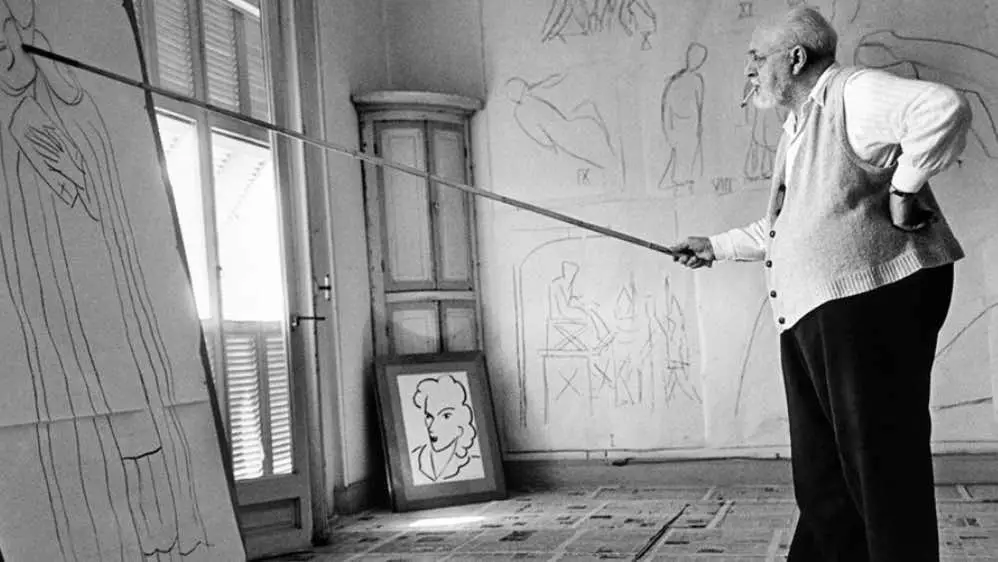
Henri Matisse’s artistic legacy is defined by his unwavering commitment to exploring color, form, and emotion.
From his early Fauvist works to the later cut-outs, Matisse’s ability to push the boundaries of traditional art has left an enduring impact on generations of artists. It continues to inspire creative minds to this day.
Through his ten most important works, we have witnessed the evolution of a genius who transformed the art world, creating an indelible mark that will forever be celebrated and admired.
Anita Louise Art is dedicated to art education, great artists, and inspiring others to find and create their art. We love art that uplifts and inspires. #ArtToMakeYouSmile! #ArtToMakeYouHappy!
If you want to see any of my art, you can find out more by clicking here. If you are interested in what inspires me and my paintings, you can discover more by clicking here.
We have a free newsletter and would love you to be part of our community; you can subscribe to the newsletter by clicking here. If you have any questions, I would be happy to talk to you. You can reach me, Anita, by clicking here.
Subscribe to our Anita Louise Art YouTube Channel, filled with great videos and information by clicking here.
Join us for our podcast “5 Minutes With Art.” Spend 5 minutes a week with us to discover and learn about great art and artists. You can find out more about our podcast by clicking here.
Related Questions
Is There Any Painting Of The Young Leonardo da Vinci?
There is a painting by Giovanni Cariani (c. 1490-1547) at the National Gallery of Art, Washington DC, called Portrait of Man With a Dog (1520) that some people have said a painting of the younger Leonardo. Leonardo would have already been dead by the time this painting was completed. There is also a little-known artwork called Romanzo di Paolo e Daria by Gaspare Visconti that some feel is making fun of Leonardo da Vinci and his red hair.
By clicking here, you can learn more by reading Is There Any Painting Of The Young Leonardo da Vinci?.
What Inspired Leonardo da Vinci To Paint The Last Supper?
Duke Ludovico Sforza commissioned Leonardo to paint the Last Supper mural. What makes the Last Supper mural so unique is that he painted it at the exact time when Christ told the Apostles during The Last Supper meal that one of them would betray him. Leonardo showed the apostles’ reactions, including Judas, who betrayed Christ.
By clicking here, you can learn more by reading What Inspired Leonardo da Vinci To Paint The Last Supper?
Mona Lisa Painting And The Paris Louvre Museum
The Mona Lisa is one of the key paintings of the Louvre Museum. It is one of the most visited paintings in the world. The Mona Lisa is a painting studied, sung about, written about, and spoken about. There is still a mystery surrounding exactly who the Mona Lisa is and why Leonardo da Vinci painted it. This mystery adds to the allure of the painting.
By clicking here, you can learn more by reading Mona Lisa Painting And The Paris Louvre Museum.

